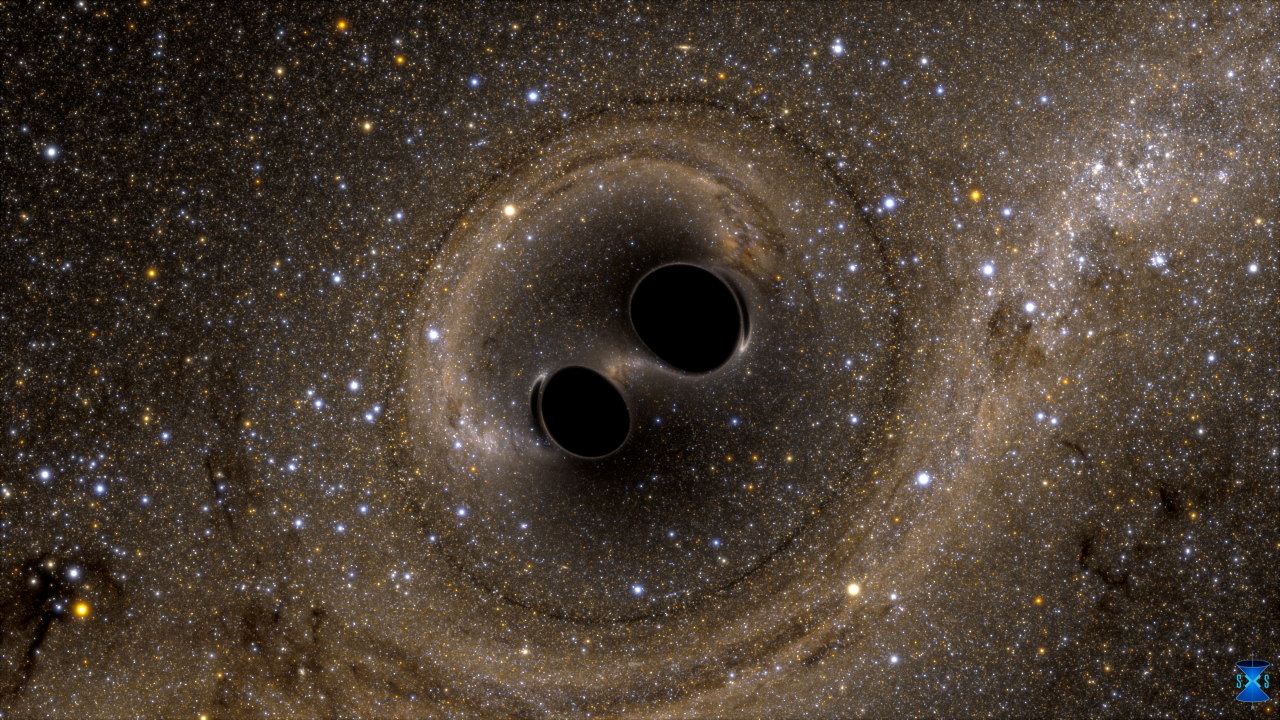LISA Special Exhibit
Black Holes

Galaxies, NGC 2207 (left) and IC 2163 (right) are locked together by gravity and will merge in a few billion years. When that happens, the supermassive black holes at their centers will orbit each other until they eventually merge. The orbiting and merging black holes will radiate gravitational waves. (Credit: NASA, ESA, Hubble Heritage Team/STScI)
Black holes are an interesting source of gravitational waves because they are not expected to emit light of any kind. What we know about black holes has been learned from the behavior of matter surrounding them.
Black holes often occur in pairs, called binaries, that are bound together by gravity and that orbit a common center of mass. As they orbit, these binary pairs emit gravitational waves, so a gravitational wave observatory can directly observe the black holes. On the other hand, astronomers expect that any matter orbiting close binary black holes will quickly fall into them, and without hot matter orbiting the black holes no light is produced. This means that gravitational waves are the best way to observe such binary black hole mergers.
A gravitational wave observatory such as LISA will see black hole binaries with masses that are approximately a million times the mass of our sun, called supermassive black holes. Ground-based detectors will see binaries with smaller masses (because they orbit more quickly and produce higher frequency waves).

Computer simulation of two merging blackholes. (Credit: SXS, the Simulating eXtreme Spacetimes (SXS) project)
Scientists already know that most galaxies host supermassive black holes at their centers. Some scientists also hypothesize that, given the age of the universe, most of the large galaxies we see today are the result of galaxy collisions and mergers. It's likely that two black holes from the previously separate galaxies would orbit around each other at the center of the new, merged galaxy. Gravitational radiation from the movements of these extremely large masses will help astronomers to map out the "dents" and "dips" in spacetime caused by two black holes. We will also learn about the shape and behavior of the event horizon of a black hole, and how black holes affect galactic evolution.
In a galaxy with a single supermassive black hole, we won't see gravitational radiation from the black hole itself. However, there are usually many stars in orbit around near the central black hole in a galaxy. As these stars age, some of them will explode as supernovae and leave behind black holes with masses from 3 to 10 times the mass of the sun. Those small black holes will emit gravitational waves as they orbit the supermassive black hole. This signal will become stronger as they get closer to the center. Such sources are called Extreme Mass Ratio Inspirals (EMRIs). Studying EMRIs will teach scientists not only about black holes, but also about general relativity.
Published: August 2003
Text Reviewed: September 2018


